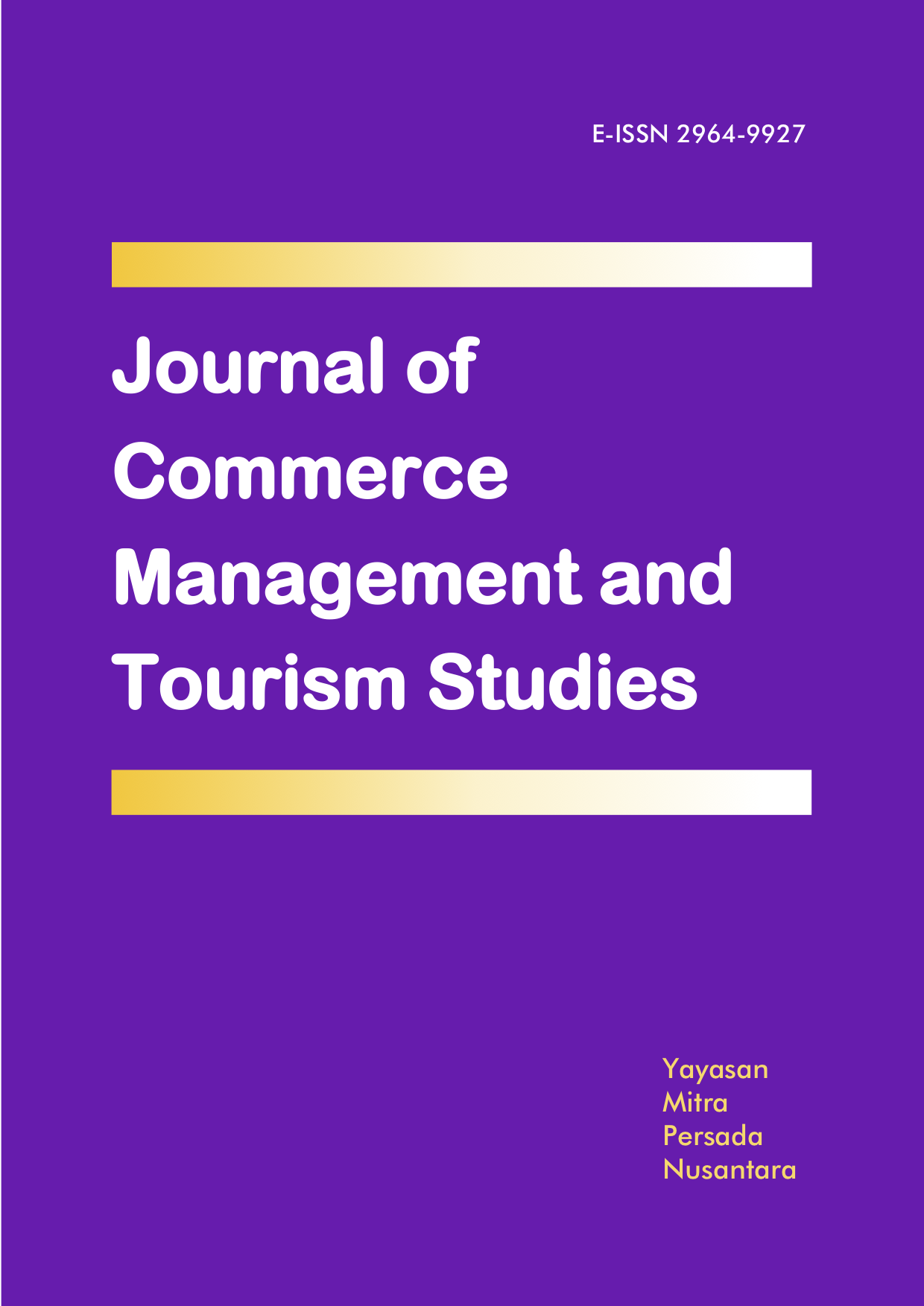Developing economies and environmental impact: A VECM analysis of external debt, ODA, and CO2
DOI:
https://doi.org/10.58881/jcmts.v2i3.143Keywords:
external debt, CO2, ODA, VECMAbstract
The objective of this study is to examine the carbon dioxide (CO2) emissions in Asian economies between 1990 and 2019, with a specific focus on their relationship with net official development assistance (NODA) and external debt. Utilizing the IPAT model as a theoretical framework, we employ various econometric methodologies to estimate both long-term and short-term outcomes. These methodologies encompass panel unit-root tests, cointegration techniques, and the VECM method. The findings of the research provide additional substantiation for the presence of cointegration among all variables. The analysis of long-term data revealed a robust and statistically significant relationship between gross domestic product (GDP) and carbon dioxide (CO2) emissions. Conversely, a strong and inverse connection was identified between foreign debt and net official development assistance (NODA). The results indicated a modest but favorable relationship between the size of the Asian population and the levels of CO2 emissions. The segment of recommendations encompasses comprehensive proposals and an extensive examination of various alternatives.
Downloads
References
Akam, D., Owolabi, O., & Nathaniel, S. P. (2021). Linking external debt and renewable energy to environmental sustainability in heavily indebted poor countries: New insights from advanced panel estimators. Environmental Science and Pollution Research, 28(46), 65300–65312. https://doi.org/10.1007/s11356-021-15191-9
Al-Mulali, U., & Ozturk, I. (2015). The effect of energy consumption, urbanization, trade openness, industrial output, and the political stability on the environmental degradation in the MENA (Middle East and North African) region. Energy, 84, 382–389. https://doi.org/10.1016/j.energy.2015.03.004
Arvin, M. B., Pradhan, R. P., Nair, M. S., & Dabir-Alai, P. (2022). Exploring the temporal links between foreign aid, institutional quality, and CO2 emissions for poorer countries. Energy and Buildings, 270, 112287. https://doi.org/10.1016/j.enbuild.2022.112287
Azwar. (2019). Economic Growth And Co2 Emissions In Indonesia: Investigating The Environmental Kuznets Curve Hypothesis Existence. Jurnal BPPK, 12, 42–52.
Bachegour, H., & Qafas, A. (2023). Does External Debt Worsen Environmental Pollution? Evidence from Morocco`. International Journal of Energy Economics and Policy, 13(2), 68–76.
Bekhet, H. A., & Othman, N. S. (2017). Impact of urbanization growth on Malaysia CO2 emissions: Evidence from the dynamic relationship. Journal of Cleaner Production, 154, 374–388. https://doi.org/10.1016/j.jclepro.2017.03.174
Beşe, E., & Friday, H. S. (2022). The Relationship Between External Debt And Emissions And Ecological Footprint Through Economic Growth: Turkey. Cogent Economics & Finance, 10(1).
Bese, E., Friday, H. S., & Özden, C. (2021). The Effect of External Debt on Emissions: Evidence from China. International Journal of Energy Economics and Policy, 11(1), 440–447.
Boly, M. (2018). CO 2 mitigation in developing countries: The role of foreign aid. https://halshs.archives-ouvertes.fr/halshs-01740881
Burnside, C., & Dollar, D. (2000). Aid, policies, and growth. American Economic Review, 90(4), 847–868.
Çetin, M., & Ecevit, E. (2015). Urbanization, Energy Consumption and CO2Emissions in Sub-Saharan Countries: A Panel Cointegration and Causality Analysis. Journal of Economics andDevelopment Studies, 3(2), 66–76. https://doi.org/10.15640/jeds.v3n2a7
Clark, G. (2007). Evolution of the global sustainable consumption and production policy and the United Nations Environment Programme’s (UNEP) supporting activities. Journal of Cleaner Production, 15(6), 492–498. https://doi.org/10.1016/j.jclepro.2006.05.017
Dietz, T., & Rosa, E. A. (1997). Effects of population and affluence on CO2 emissions. Proceedings of the National Academy of Sciences, 94(1), 175–179. https://doi.org/10.1073/pnas.94.1.175
Dogan, E., & Seker, F. (2016). Determinants of CO2 emissions in the European Union: The role of renewable and non-renewable energy. Renewable Energy, 94, 429–439. https://doi.org/10.1016/j.renene.2016.03.078
Driffield, N., & Jones, C. (2013). Impact of FDI, ODA and Migrant Remittances on Economic Growth in Developing Countries: A Systems Approach. The European Journal of Development Research, 25(2), 173–196. https://doi.org/10.1057/ejdr.2013.1
EESI. (2021). Fossil Fuels. https://www.eesi.org/topics/fossil-fuels/description
Ehrlich, PR., & Holdren, JP. (1971). Impact of population growth. Sci, 171(3977), 1212–1217.
Gallego-Álvarez, I., Segura, L., & Martínez-Ferrero, J. (2015). Carbon emission reduction: The impact on the financial and operational performance of international companies. Journal of Cleaner Production, 103, 149–159. https://doi.org/10.1016/j.jclepro.2014.08.047
Kablan, S., & Chouard, V. (2022). Does climate aid matter for reducing CO2 emissions? The case of foreign aid for renewable energy. Applied Economics, 54(46), 5357–5372. https://doi.org/10.1080/00036846.2022.2044995
Kang, YH. (2009). Climate change reaction and green ODA. Ournal ofInternational Development Cooperation, 4(4), 117–132.
Katircioglu, S., & Celebi, A. (2018). Testing the role of external debt in environmental degradation: Empirical evidence from Turkey. Environmental Science and Pollution Research International, 25(9), 8843–8852. https://doi.org/10.1007/s11356-018-1194-0
Khan, M. K., Khan, M. I., & Rehan, M. (2020). The relationship between energyconsumption, economic growth and carbon dioxide emissions inPakistan. Financial Innovation, 6(1), 1–13.
Kumar, M. (2020). Social, Economic, and Environmental Impacts of Renewable Energy Resources. In Wind Solar Hybrid Renewable Energy System. IntechOpen. https://doi.org/10.5772/intechopen.89494
Michaelowa, A., & Michaelowa, K. (2007). Climate or development: Is ODAdiverted from its original purpose? Clim Chang, 84(1), 5–21.
Momita, Y., Matsumoto, T., & Otsuka, K. (2019). Has ODA contributed togrowth? An assessment of the impact of Japanese ODA. Japanand the World Economy, 49, 161–175.
Salahuddin, M., Ali, I., Sc, M., Vink, N., & Gow, J. (2018). The effects of Urbanization and Globalization on CO 2 emissions: Evidence from the Sub-Saharan Africa ( SSA ) countries,.
Sasana, H., & Aminata, J. (2019). Energy Subsidy, Energy Consumption, Economic Growth, and Carbon Dioxide Emission: Indonesian Case Studies. International Journal of Energy Economics and Policy, 9(2), 117–122. https://doi.org/10.32479/ijeep.7479
Sheoran, M., Chandra, A., Bhunia, H., Bajpai, P. K., & Pant, H. J. (2018). Residence time distribution studies using radiotracers in chemical industry—A review. Chemical Engineering Communications, 205(6), 739–758. https://doi.org/10.1080/00986445.2017.1410478
Siraj, T. (2012). Official development assistance (ODA), public spendingand economic growth in Ethiopia. J Econ Int Financ, 4(8).
Tong, Z.-D., Tang, A., Li, K.-F., Li, P., Wang, H.-L., Yi, J.-P., Zhang, Y.-L., & Yan, J.-B. (2020). Potential Presymptomatic Transmission of SARS-CoV-2, Zhejiang Province, China, 2020. Emerging Infectious Diseases, 26(5), 1052–1054. https://doi.org/10.3201/eid2605.200198
United Nations. (2019). World Investment Report 2019. United Nations Conference On Trade And Development.
Wang, H., Asif Amjad, M., Arshed, N., Mohamed, A., Ali, S., Haider Jafri, M. A., & Khan, Y. A. (2022). Fossil Energy Demand and Economic Development in BRICS Countries. Frontiers in Energy Research, 10. https://www.frontiersin.org/articles/10.3389/fenrg.2022.842793
York, R., Rosa, E. A., & Dietz, T. (2003). STIRPAT, IPAT and ImPACT: Analytic tools for unpacking the driving forces of environmental impacts. Ecological Economics, 46(3), 351–365. https://doi.org/10.1016/S0921-8009(03)00188-5
Downloads
Published
Versions
- 2023-12-02 (2)
- 2023-12-01 (1)
How to Cite
Issue
Section
License
Copyright (c) 2023 Journal of Commerce, Management, and Tourism Studies

This work is licensed under a Creative Commons Attribution 4.0 International License.














